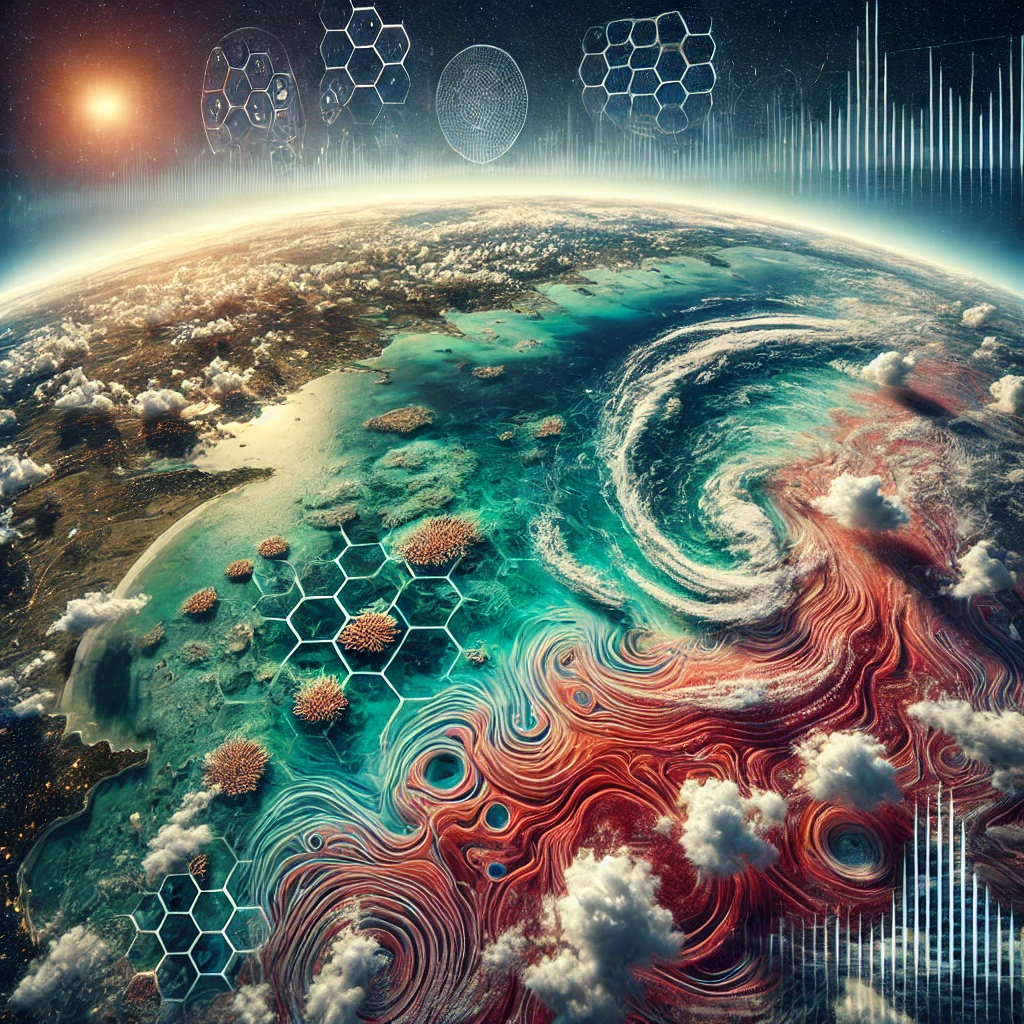Oceans and AI: Scientists use deep learning to combat climate crisis
Oceans are facing a multitude of climate-induced stresses including acidification, sea-level rise, warming waters, and ice melt. The study underscores that traditional monitoring methods, while effective in localized contexts, often fail to keep up with the scale and complexity of changes. This is where deep learning has proven transformative.

From bleached coral reefs to disappearing sea ice, the impacts of climate change on oceans are accelerating. A new study explores how deep learning technologies are transforming our ability to monitor and mitigate these challenges.
Titled “Impacts of Climate Change on Oceans and Ocean-Based Solutions: A Comprehensive Review from the Deep Learning Perspective” and published in the journal Remote Sensing, the review investigates how artificial intelligence, particularly deep learning (DL), is being deployed to assess physical ocean changes, track ecosystem degradation, and optimize ocean-based climate solutions.
How is deep learning changing the way we monitor oceanic changes?
Oceans are facing a multitude of climate-induced stresses including acidification, sea-level rise, warming waters, and ice melt. The study underscores that traditional monitoring methods, while effective in localized contexts, often fail to keep up with the scale and complexity of changes. This is where deep learning has proven transformative.
By leveraging vast datasets from satellite remote sensing, in situ measurements, and reanalysis models, DL algorithms now enable high-resolution, real-time tracking of ocean pH, sea surface temperature (SST), sea ice concentration, and sea level anomalies. The research outlines the growing use of convolutional neural networks (CNNs), recurrent neural networks (RNNs), and transformers in oceanography.
For instance, DL models such as CNN-LSTM hybrids have been employed to predict SST variations with lead times extending to 24 months. U-Net architectures have improved marine heatwave (MHW) detection by learning intricate spatial features from satellite imagery. Meanwhile, transformer-based models are outperforming older approaches in long-range SST forecasting and ENSO (El Niño-Southern Oscillation) predictions, offering reliability across up to 18-month horizons.
In sea ice research, CNNs and attention-based models are redefining classification and detection capabilities, especially when applied to SAR (synthetic aperture radar) and GNSS-R (global navigation satellite system reflectometry) data. These models excel even under adverse conditions such as polar night or cloud cover, traditionally major limitations for optical remote sensing.
What ocean-based climate solutions are enabled or enhanced by deep learning?
Oceans offer vital pathways for climate mitigation and adaptation. The study presents deep learning as a linchpin in three critical mitigation areas: renewable energy optimization, maritime decarbonization, and ocean carbon sink enhancement.
In renewable energy, DL models are used to estimate wind speed and direction with high accuracy from remote sensing data like CYGNSS and Sentinel-1 SAR. This supports optimal site selection and output forecasting for offshore wind and wave energy systems. Models such as 1D-CNNs and CNN-transformer hybrids are capable of correcting for high-bias scenarios in extreme wind events, thereby improving prediction fidelity.
In maritime transport, a sector responsible for roughly 3% of global CO₂ emissions, DL is aiding decarbonization through predictive modeling. Bi-directional LSTM and attention-enhanced transformer models analyze operational data to forecast ship fuel consumption and identify optimal routing strategies. In one case, deep reinforcement learning applied to container ship data led to fuel savings exceeding 6% on unconstrained routes.
Carbon sequestration is another frontier. Deep learning models such as U-Nets and feedforward neural networks are employed to estimate parameters like partial pressure of CO₂ (pCO₂), total alkalinity, and dissolved inorganic carbon, facilitating more accurate assessments of oceanic carbon uptake. These insights are crucial to understanding and enhancing the ocean's role as a long-term carbon sink.
Are marine ecosystems also being protected by AI innovations?
The study dives deeply into the role of DL in protecting fragile marine ecosystems including coral reefs, kelp forests, and coastal wetlands—each of which faces unique risks from warming, acidification, and sea-level rise.
Coral reef mapping, historically dependent on manual or semi-automated classification, has been revolutionized by DL. Dense U-Nets, CNNs, and CR transformer architectures, when paired with multispectral and LiDAR data, are now able to classify coral geomorphic zones with over 90% accuracy. Underwater image segmentation using ResNet and U-Net backbones has further advanced bleaching detection and reef health assessment.
Kelp forests, vital for biodiversity and carbon capture, are monitored via satellite and aerial imagery. DL models such as Mask R-CNNs and FANets enable precise detection of kelp canopy cover and seaweed aquaculture zones. These models are trained on high-resolution satellite data from Landsat, MODIS, and Sentinel missions.
In coastal wetlands, U-Nets and Transformer-based hybrid models classify mangroves, salt marshes, and other habitats from multisource data including hyperspectral, SAR, and LiDAR. Sentinel-1 SAR and Sentinel-2 MSI (Multispectral Instrument) datasets are frequently used, providing both resilience to cloud cover and rich spectral information. Results show model accuracies exceeding 95% in many cases, critical for long-term conservation efforts.
Limitations and future challenges
Despite impressive progress, the authors warn against over-reliance on DL models without rigorous validation. Most current studies validate models on randomly split datasets, failing to assess generalization across time and geographic regions. This poses risks when models are deployed in operational contexts like polar navigation or early warning systems.
Another critical gap lies in uncertainty quantification. Few studies assess aleatoric and epistemic uncertainties, leaving users unaware of model confidence in real-world scenarios. The authors advocate for the integration of methods like SHAP (Shapley Additive Explanations), feature ablation, and permutation importance to enhance interpretability and trust.
Additionally, calibration issues across sensors, temporal misalignment of datasets, and missing values remain significant challenges in multisensor integration. Techniques like data imputation, super-resolution modeling, and cross-sensor harmonization are proposed to address these challenges.
- FIRST PUBLISHED IN:
- Devdiscourse










